What the Internet Was Like in 2004
A look back at web technology in 2004 — when Flickr and Gmail launched, blogging plus RSS was the new social software, Google IPOed, and the first Web 2.0 Conference happened.
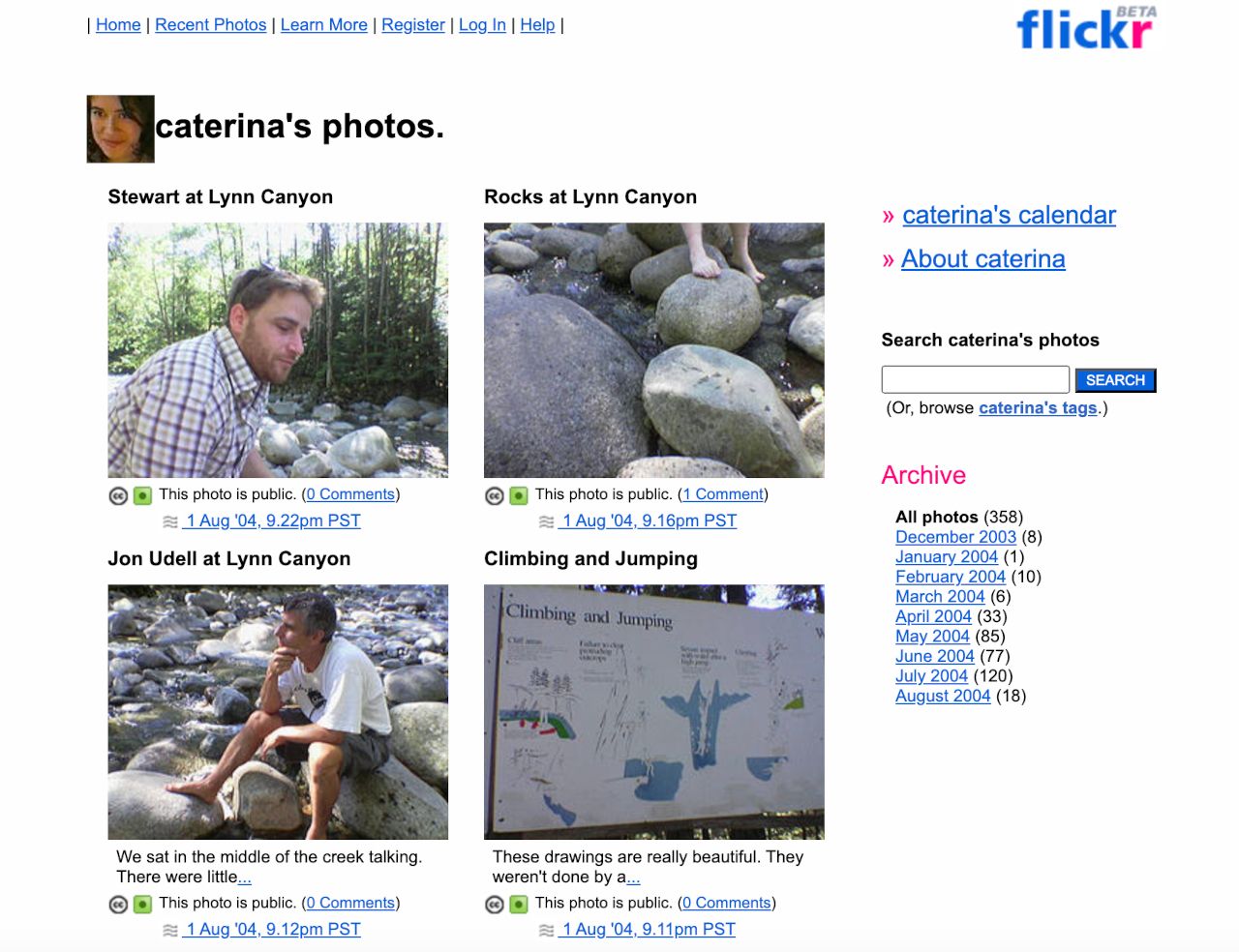
2004, twenty years ago, was the year that Web 2.0 truly began. In February, Facebook was quietly launched in a Harvard dorm room. Meanwhile, across the border in Canada, a photo sharing site called Flickr was released. Then in April, Google launched one of the first web apps that worked just like a native app: Gmail. The technology behind it, a JavaScript technique that would later be termed "Ajax,” would come to define many of the web products that became popular over the coming years.
Something significant was happening on the internet in early 2004, but we didn’t yet have a term for it. Blogging and wikis were encouraging ordinary people to write more on the web — you didn’t necessarily need to have technical skills anymore. At the same time, new websites like Flickr and del.icio.us (a web-based bookmarking service) were enabling people to share things online. The terms I used back then to describe what was happening were “read/write web” (inspired by Tim Berners-Lee) and “two-way web” (coined by Dave Winer). I had named my then one-year old blog after one of those terms: Read/Write Web.
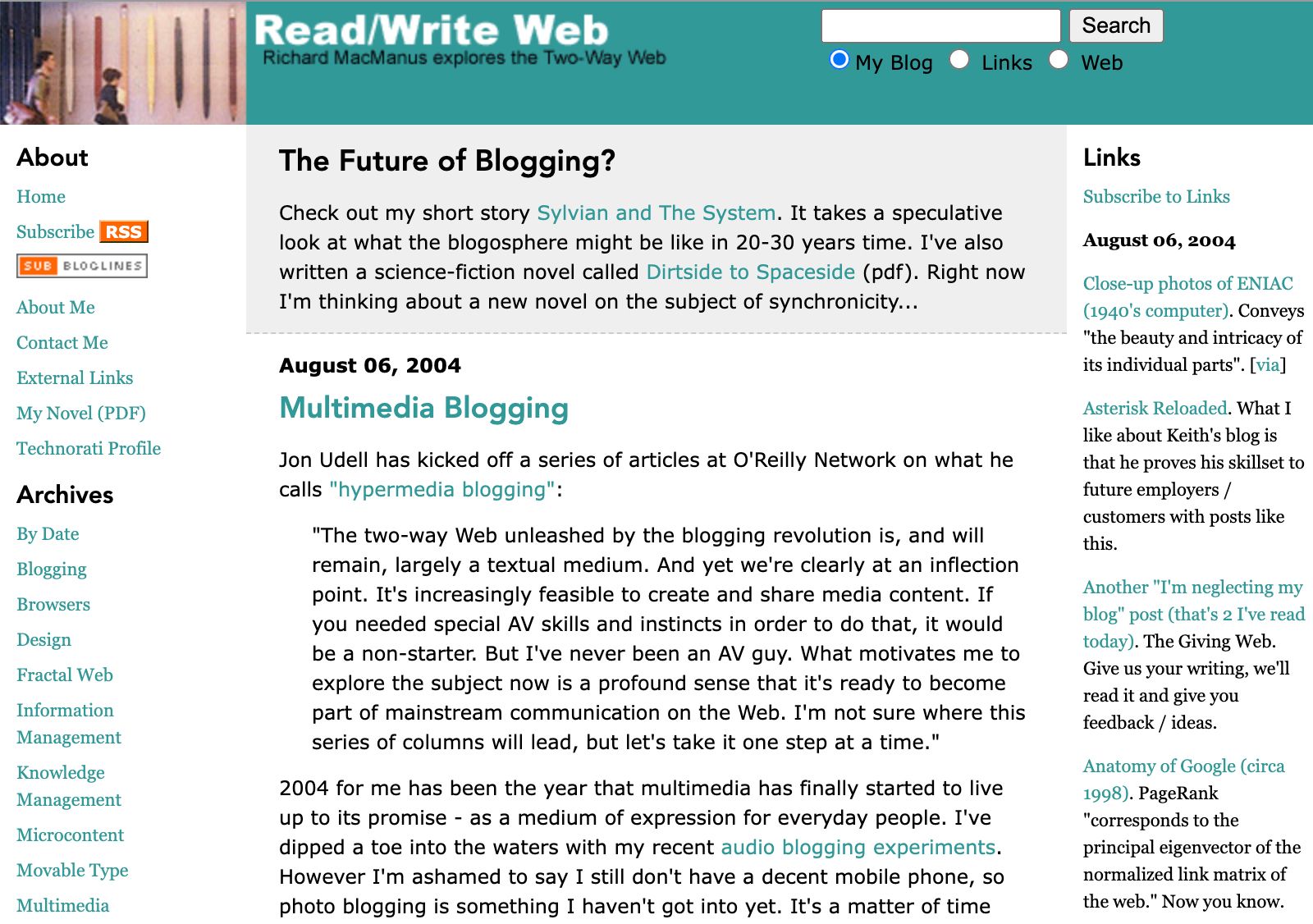
Social Software, Blogosphere
This was all well before social media. Indeed, it wasn’t until June 2004 that a social network site achieved one million users; that was MySpace, which continued to be the most popular social network for nearly four more years.
In 2004, the phrase bandied about by web geeks like me was “social software.” This encompassed MySpace, Friendster, blogging platforms like Blogger and LiveJournal, wikis like Wikipedia, and even 1990s staples like online forums and message boards.

Blogging was still niche in 2004, but it was increasingly where daily conversations online were happening. I started out in 2002 using a desktop app called Radio Userland, but in early May 2004, I switched to a browser-based blog platform called Movable Type. The “blogosphere” was kind of a prototype for social media, because it was where people learned to be opinionated and express ‘takes’ on the internet. The beauty of the blogosphere was that it was truly decentralised. On the other hand, it was not very diverse — most of the top blogs on Technorati, a fledgling blog-ranking and search service, were politics or tech blogs.

Browser Power
The rise of browser-based web apps was a key internet technology trend in 2004. I was a big fan of the browser-based RSS Reader, Bloglines (this was more than a year before Google Reader arrived). In a July 2004 post on RWW about Bloglines, I rhapsodised about the wonders of web apps:
“In a nutshell: browser-based apps are easier to use, don't require installation, and probably most importantly of all are accessible on any computer hooked up to the Internet. Rich clients can offer better (richer/smarter) functionality and are not constrained by the limitations of the browser. So there are trade-offs both ways.”
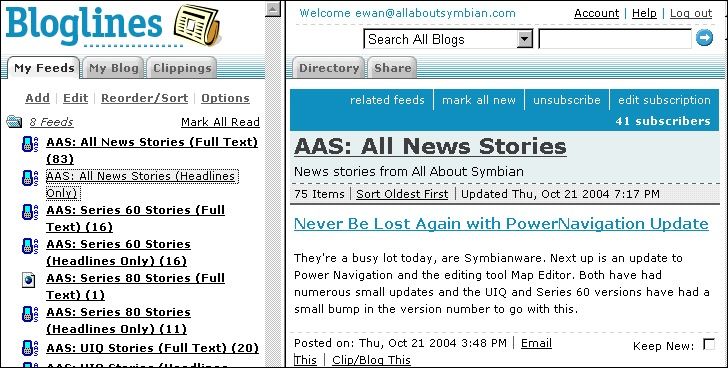
I added that browser-based apps can work across devices, too — but of course this was several years before smartphones turned up.
Speaking of browsers, the first version of Mozilla’s Firefox launched in November 2004. And it was just as well, because Microsoft was at the peak of its browser market dominance that year. By some counts it had 95% of the market.
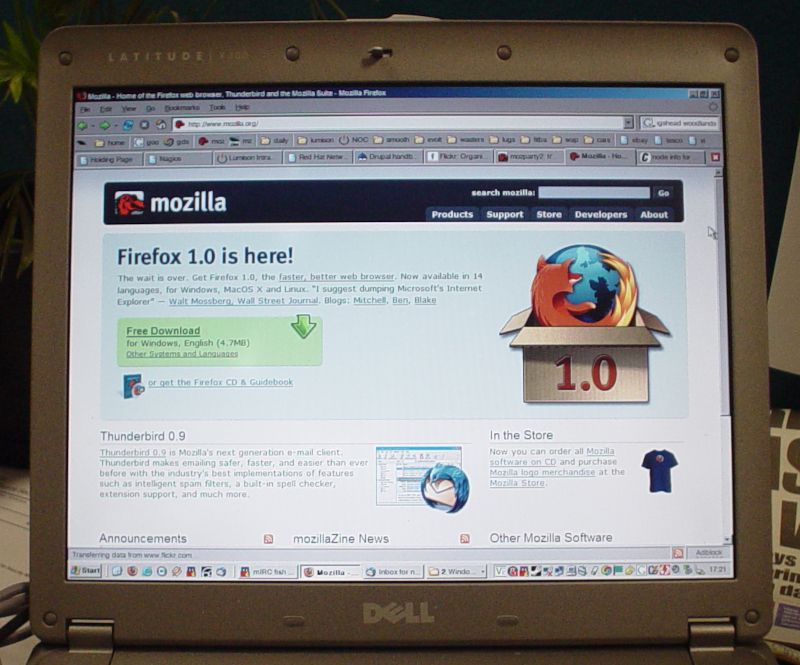
Fortunately, there was important momentum happening towards web standards, thanks in large part to The Web Standards Project (Wasp), led at the time by Molly Holzschlag. Even Microsoft was starting to get the message, as this post in August 2004 by Eric Meyer noted:
“Microsoft’s home page has been redesigned and uses standards-oriented design principles, eschewing tables and spacer GIFs for CSS-driven layout. The weight of their home page’s HTML document dropped by almost three-quarters—it’s 27.5% the size of the IE-specific version of the previous design, and 30.5% the size of the non-IE version.”
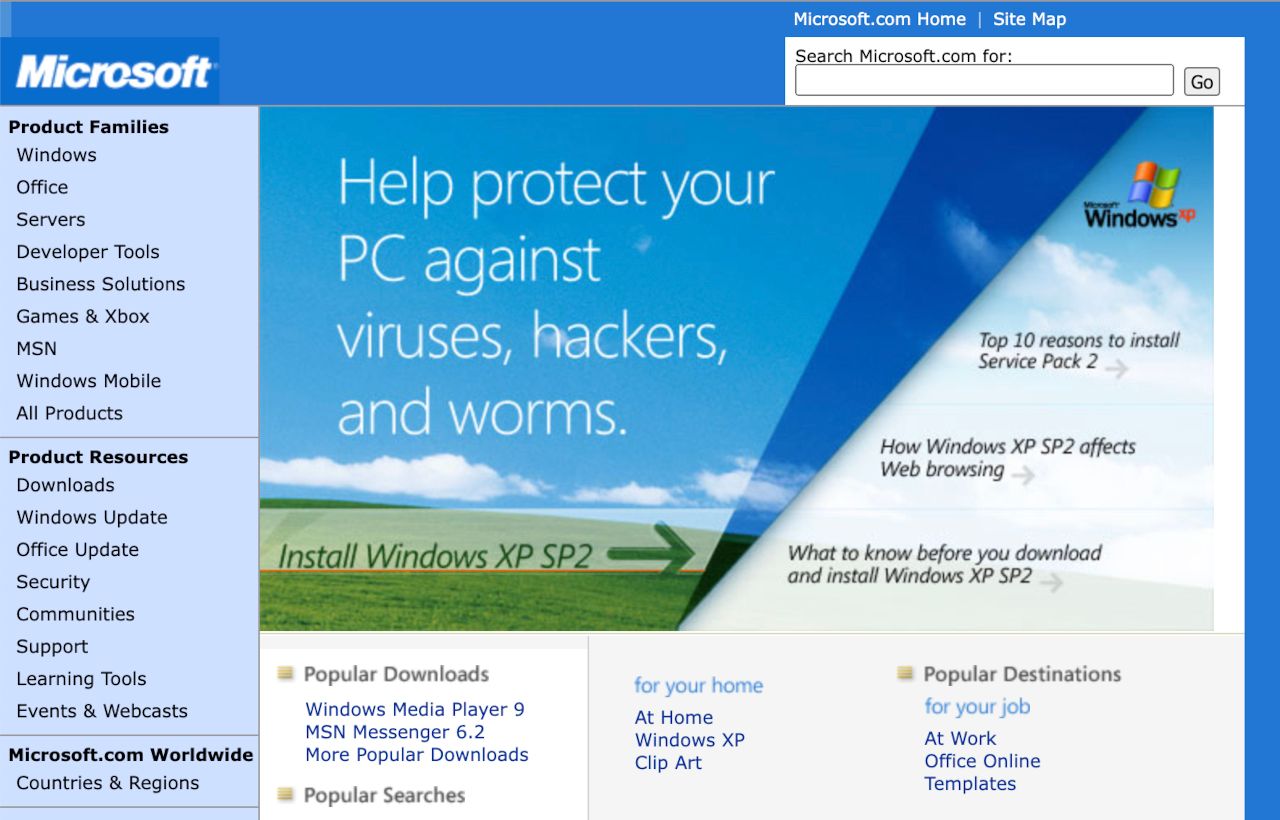
From Websites to Web Services
Beyond the functional code, the form of websites was evolving too. In April 2004, I had an article published on Digital Web Magazine entitled The Evolution of Corporate Web Sites. In it, I outlined how websites were becoming a collection of ‘web services.’
“Web sites circa 2004 are no longer thought of as “places” or virtual versions of real-world spaces,” I wrote. “Web sites are now a collection of 'loosely-coupled' services.”
I used Amazon.com as my main example:
“…I see Amazon as a collection of services tailored specifically for me. It knows my name, it recommends stuff to me, it can show me what’s new since I last visited, it offers me ways to make money by partnering with Amazon, it lets me rate and review items, and much more. Plus I can utilize aspects of Amazon’s Web site via a third party service, such as Allconsuming.net. Or I can build my own service, using Amazon’s APIs (Application Programming Interfaces).”
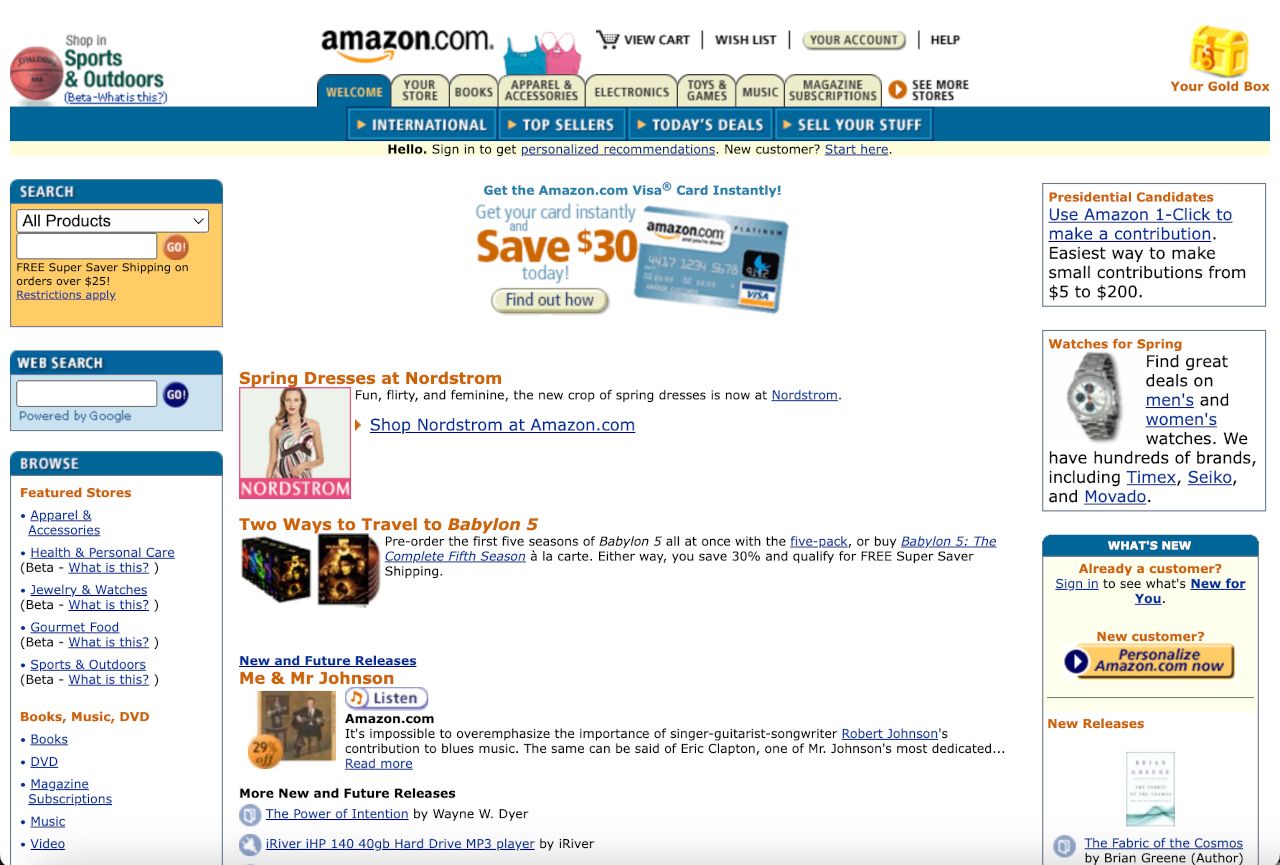
Silicon Valley Revival
Then in October came the first Web 2.0 Conference. Crucially, the target audience for this event was not developers, but businesspeople and investors. The second internet bubble was being primed.
The theme of the conference was “the Web as Platform” and this became my own modus operandi for Read/Write Web going forward. To wrap up 2004, I highlighted a few internet companies or products that exemplified the new web movement. The first was Google, which had IPOed in August and was, I thought, “competing very successfully with Microsoft, who may as well be termed 'The Anti-Web 2.0' because they're using the desktop as their platform and not the Web.”
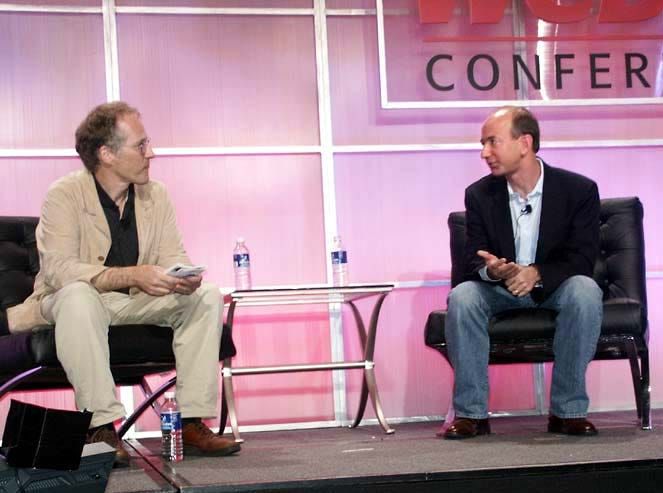
I also highlighted Flickr, because it had “the most buzz of all the social software apps on the Web today.” Even though del.icio.us was an especially geeky app, the qualities it had were — in retrospect — very 2004: “…the sheer scale of users brought many community benefits - e.g. it functioned as a recommendation engine for the blogosphere and its tag-based system proved to be a rare example of successful topic mapping.”
Finally, I shouted out Feedburner, the RSS feed management startup which “burst onto the scene in 2004 with the one essential service that bloggers were missing — a way to track RSS statistics.” The professionalisation of blogging — including my own blog, RWW — wouldn’t kick into gear until the following year, but having a way to manage your feeds and track readership was a part of that shift to full media status.
Lead image: Flickr co-founder Caterina Fake's photos, early August 2004; via Wayback Machine
Read next: More year-by-year overviews of internet history
Buy the Book
My Web 2.0 memoir, Bubble Blog: From Outsider to Insider in Silicon Valley's Web 2.0 Revolution, is now available to purchase:
- Paperback, US$19.99: Amazon; Bookshop.org
- eBook, US$9.99: Amazon Kindle Store; Apple Books; Google Play
Or search for "Bubble Blog MacManus" on your local online bookstore.